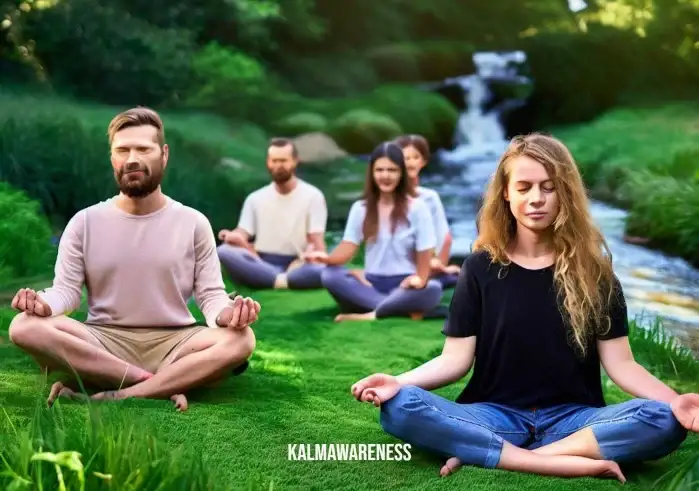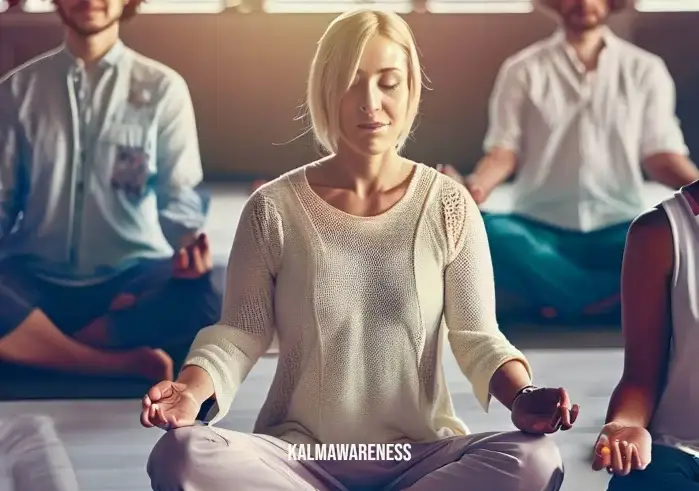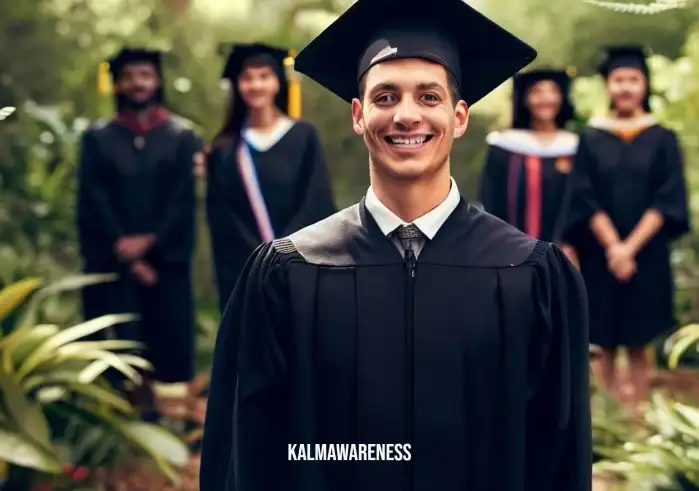The Guided Journey: Exploring the Power of Meditation
Meditation has often been seen as an individual’s path to inner peace and mindfulness. However, with guided journey meditation, you are led on an exploration, unlocking your mind’s potential, enhancing concentration, and developing a greater focus. The idea is not just to sit still but to journey through your consciousness, explore, and emerge enlightened.
What is Guided Journey Meditation?
Guided journey meditation is a form of meditation that involves being led by a narrator or guide on a journey through different aspects of your subconscious mind. This journey could involve visualization techniques, breathing exercises, or even sound baths that immerse you in different landscapes and experiences.
Guided journey meditation takes you on an expedition to the untouched corners of your psyche. It allows you to confront and pacify anxieties, stressors, and unresolved emotions, leading to an improved sense of self-awareness and emotional well-being.
But how exactly do you approach guided journey meditation, and what benefits can you expect from it? Let’s explore.
Getting Started
Just as you would prepare for a physical journey, preparing for a guided journey meditation is essential. Start by finding a comfortable and quiet place where you won’t be disturbed. If you’re new to this form of meditation, you may find it beneficial to start with short sessions, such as a 5-minute meditation for focus, gradually increasing your meditation time as you get more comfortable.
Starting your day with meditation can be incredibly beneficial. For instance, morning meditation for 5 minutes can help set the tone for the rest of your day, grounding you in mindfulness and tranquility.
Furthermore, to augment your practice, it’s important to understand the principles of meditation. These principles form the bedrock of your journey, guiding you through the terrain of the mind and ensuring a smooth and fulfilling experience.
The Journey within the Journey
Just like a body scan in a calm classroom, guided journey meditation enables you to scan your body, understanding its sensations, and pinpointing areas of tension or unease.
It’s important to remember that this is a journey, and each step holds significance. As you progress, you may find the 11-minute meditation to be a valuable stepping stone, enabling a deeper dive into self-awareness and self-connection.
Just as a medit scanner training refines your ability to scan physical objects, guided journey meditation improves your capability to scan your emotional and psychological state, offering profound insights into your psyche.
The Benefits
Apart from the relaxation and tranquility it offers, guided journey meditation can significantly improve your focus and concentration. A regular practice has been shown to improve attention span, making it an excellent tool for students and working professionals. For instance, indulging in meditation before studying can improve your absorption of information and enhance your academic performance.
Similarly, using meditation for undivided attention can lead to a greater sense of present-mindedness, reducing the mental clutter and enabling you to engage more effectively with the task at hand.
We invite you to continue reading the next part of this enlightening article, where we will delve into some of the nuances of guided journey meditation, its role in education and classroom settings, and how it intertwines with concepts like mindfulness, focus, and concentration. Let us journey further into this fascinating realm of the mind!

The Science Behind Guided Journey Meditation
As we traverse further into the terrain of guided journey meditation, we begin to encounter the scientific underpinnings of this practice. It’s more than just relaxation or focus – there’s a tangible impact on our brain and its functioning. Understanding this can deepen our appreciation for meditation and provide us with greater motivation to incorporate it into our daily routines.
In the realm of neuroscience, researchers have discovered that guided journey meditation can significantly influence our brainwave patterns. Through practices like alpha wave meditation, we can shift our brain from a typically alert, beta-wave dominant state to a more relaxed, alpha-wave state. This shift is often associated with enhanced creativity, improved problem-solving abilities, and heightened mental clarity.
A unique and longer variant of this practice, the 60-minute meditation, has been shown to have profound effects on the brain’s neuroplasticity, assisting in the formation of new neural pathways and enhancing our cognitive abilities.
Influencing Brain Waves
Let’s take a moment to understand how these brain waves influence our mental state:
| Brainwave Type | Function | How Meditation Influences |
|---|---|---|
| Beta Waves | Associated with wakefulness and alertness. | Meditation helps in reducing excess beta activity, promoting relaxation. |
| Alpha Waves | Associated with relaxation and creativity. | Meditation helps to enhance alpha wave production, promoting a calm and creative mindset. |
| Theta Waves | Linked to deep relaxation, and sleep. | Meditation can help access theta state while awake, providing deep relaxation. |
| Delta Waves | Associated with deep, dreamless sleep. | Through deep meditative states, delta wave activity may be accessed, promoting deep healing and rejuvenation. |
Source: Alpha Brain Waves Meditation
The Role of Guided Journey Meditation in Education
Venturing beyond individual practice, guided journey meditation also finds relevance in education, particularly in classroom settings. Integrating mindfulness practices in education has been shown to significantly improve students’ concentration, academic performance, and emotional well-being.
For instance, mindful education transcripts demonstrate how mindfulness techniques are woven into lesson plans to promote an environment of focused learning. Similarly, the rise of mindfulness surveys for students aids in assessing the impact of such practices on a student’s academic and personal growth.
Institutions like the Holistic Life Foundation and the Penn Mindfulness Class have been pioneers in integrating mindfulness practices, including guided journey meditation, into their curricula. Their success stories stand testament to the effectiveness of mindfulness in education.
Guided journey meditation also finds its place in mindfulness journaling for kids, a practice that combines the benefits of mindfulness and reflective writing. This approach not only fosters concentration and self-awareness among children but also nurtures their writing skills and creativity.
As we continue our exploration in the next chapter, we will delve deeper into how guided journey meditation intertwines with principles of mindfulness and focus. We will also explore its benefits for different age groups, from toddlers to adults. Stay with us on this journey of discovery and enlightenment!

Meditation Across Different Age Groups: A Guided Journey
As we move forward on our guided journey meditation path, we will explore how this enriching practice adapts to and benefits various age groups. From developing young minds to nurturing seasoned ones, guided meditation can significantly enhance mindfulness, focus, and overall well-being.
Mindfulness and Little Ones
Starting with the youngest demographic, introducing mindfulness and meditation in early childhood can sow seeds for a resilient, balanced, and focused future. “Children are great imitators. So, give them something great to imitate,” says a renowned child education expert.
Programs like Mindful Littles incorporate guided journey meditation into their routines, providing young children with an enjoyable and engaging way to learn mindfulness. Similarly, the incorporation of mindfulness practices into popular children’s programs, like Sesame Street Yoga, makes meditation a fun and inviting prospect.
Adolescence: A Crucial Stage
As children transition into adolescence, they encounter numerous challenges. During this period, guided journey meditation can serve as a crucial tool for managing stress, cultivating focus, and nurturing self-esteem. It can empower them to navigate these transformative years with grace and resilience.
Teenage confidence-building courses often utilize meditation techniques to bolster self-esteem and confidence. As Ali Smith, co-founder of the Holistic Life Foundation, once stated, “Mindfulness is not the answer to everything, and it’s important that our enthusiasm doesn’t run ahead of the evidence. But kids should be able to have the access to check it out.”
Meditation in Adulthood
As adults, life can often feel like a whirlwind of responsibilities and tasks. This is where the practice of guided journey meditation can bring about a sea of calm. One quote that encapsulates this is by Andrew Huberman, a renowned neuroscientist, who said, “When you own your breath, nobody can steal your peace.” His research, which you can read more about in his interview, revolves around the impact of meditation on the adult brain.
Aging Gracefully with Meditation
The practice of guided journey meditation isn’t limited by age. As we step into the golden years, the practice continues to offer profound benefits. It can help manage age-related stress, improve memory, and provide a sense of peace and contentment. As Mark Greenberg, an expert in mindfulness, rightly puts it, “We believe that mindfulness can help people of all ages. It’s like a mental vitamin that can help our minds to be healthy.”
In the next chapter of our journey, we will explore how guided journey meditation intertwines with our daily lives, beyond the realm of formal meditation sessions. We will uncover how meditation principles can permeate our everyday activities and how various forms of meditation, like Tennis Meditation and Taekwondo Meditation, integrate mindfulness in physical activity. We invite you to continue this enriching journey with us!

Mindful Living: Incorporating Guided Journey Meditation into Everyday Life
In this chapter of our guided journey meditation series, we shift our focus from the meditation mat to the bustling world around us. We’ll explore how to incorporate the principles and benefits of meditation into our everyday activities and habits. By doing so, we are not just practicing mindfulness but living it.
Bringing Mindfulness to Physical Activities
Meditation isn’t restricted to stillness and silence. In fact, integrating mindfulness into physical activities can enhance the benefits of both the mind and body. A great example is Taekwondo meditation, which seamlessly combines the focus and tranquility of meditation with the discipline and strength of Taekwondo. Likewise, Tennis meditation encourages players to tap into their inner calm amidst the high-paced game, improving their focus, performance, and enjoyment of the sport.
Attention, Focus, and Meditation
Attention is the cornerstone of meditation and mindfulness. It is about harnessing the power of the mind to concentrate on the present moment. Undeniably, attention plays a vital role in our day-to-day activities. It affects our learning, communication, productivity, and even our sense of satisfaction in life.
There is an intrinsic connection between guided journey meditation and attention. The process of focusing our attention on a guide or a series of prompts encourages us to train our minds to stay in the present, without being swayed by external distractions or internal thoughts. This practice can be carried over into everyday activities, whether it’s studying, working, or simply enjoying a walk in the park.
Meditation and Sleep: An Unlikely Duo
A good night’s sleep is a treasure that not all of us get to enjoy. The root cause often lies in our minds, bustling with thoughts and worries. This is where guided journey meditation comes in, paving the path to peaceful and restful slumber. Techniques such as brain fog meditation or 60-minute meditation can help calm the mind, prepare it for rest, and even enhance the quality of sleep.
The Power of Mindful Eating
In our fast-paced lives, meals are often rushed affairs. However, mindful eating – an application of meditation principles to eating habits – can revolutionize our relationship with food. By focusing our attention on the process of eating, we start to savor our food more, understand our body’s cues better, and even make healthier choices.
Embracing a Mindful Lifestyle
In essence, guided journey meditation is more than a practice. It’s a mindset, a lifestyle. By weaving mindfulness into our daily routines and activities, we can embrace a more balanced, focused, and fulfilled life.
We’ve covered how guided journey meditation can be integrated into everyday life. In the next chapter, we’ll take a closer look at different forms of guided journey meditation and the unique benefits they offer. From alpha brain waves meditation to magnetic pull during meditation, we’ll explore the exciting world of specialized meditation practices. We warmly invite you to join us on the next stage of this enlightening journey.

Unveiling the Depths of Guided Journey Meditation
Having looked at how to integrate guided journey meditation into daily life, let’s delve into the different forms of guided journey meditation and the unique benefits they offer.
Meditation: More Than Just a Practice
Meditation is not a monolithic practice. It comes in various forms and techniques, each with their unique characteristics and benefits. Whether you’re a novice or an experienced practitioner, exploring these forms can enrich your meditative journey and provide deeper insights into your inner self.
Alpha Brain Waves Meditation
Alpha brain waves are associated with a state of serene alertness and creativity. In alpha brain waves meditation, guided instructions lead you to a mental state where these waves are dominant, fostering relaxation and creativity.
Magnetic Pull During Meditation
Some meditators report feeling a ‘pull’ or a sense of movement during deep meditation. Known as the magnetic pull during meditation, it’s considered a sign of reaching profound depths of consciousness.
Dhyani Mudra Meditation
In this form of meditation, the hand gesture (or ‘mudra’) plays a significant role. The Dhyani Mudra is a specific hand posture that promotes deep contemplation and tranquility.
To give a better understanding, the table below summarizes the unique aspects of these types of meditation:
| Type of Meditation | Key Aspects |
|---|---|
| Alpha Brain Waves Meditation | Dominance of alpha brain waves, Enhances creativity, Promotes relaxation |
| Magnetic Pull During Meditation | Sensation of ‘pull’ or movement, Indicates profound depths of consciousness |
| Dhyani Mudra Meditation | Uses a specific hand gesture, Promotes deep contemplation and tranquility |
Bearing in Mind…
- Each type of guided journey meditation has its unique benefits. Choose the one that resonates with your needs and objectives.
- Remember, the ultimate goal is not the technique itself but the mindfulness and inner peace it helps cultivate.
- Regular practice is key. As with any skill, the more you practice meditation, the more adept you become.
We’ve now explored how diverse and enriching the landscape of guided journey meditation can be. But our journey doesn’t end here. In the next chapter, we will explore the role of mindfulness and meditation in education. How can these practices help students cope with academic stress? How are institutions integrating mindfulness into their classrooms? From a mindfulness journal for kids to the penn mindfulness class, we will uncover the transformative power of mindfulness in education. Let’s continue our enlightening journey into the world of guided journey meditation.

The Journey Continues – Embracing Guided Journey Meditation
Having journeyed through the myriad facets of guided journey meditation, let’s bring our exploration to a tranquil close, while still leaving space for the journey to continue.
Everyday Meditation: Infusing Life with Mindfulness
Meditation is not an isolated activity to be confined within the four walls of a quiet room. It is a way of living, a perspective that can pervade every moment of our lives. From mindful eating to mindful walking, every activity can be a meditation in itself when done with conscious attention and a grounded presence.
Imagine enjoying a meal not just for the taste but also for the color, texture, and aroma. Picture a walk in the park where every step is a communion with Earth, each breath a celebration of life. This is the magic of mindfulness.
A Meditation for Every Mood
Just as we have different moods and emotions, there are various meditative practices to resonate with our changing mental states. Feeling anxious? Try the calming soham meditation. Need a dose of joy? The loving-kindness meditation might be just what you need.
Like an artist with a palette of colors, you can choose the right meditation for your current state of mind, creating a vibrant canvas of inner peace and happiness.
The Power of Communal Meditation
Meditation, though often a solitary practice, can take on a new dimension when done in groups. Communal meditation sessions, like the kundalini awakening meditation, can be powerful experiences, filled with a sense of unity and shared energy.
Inviting Everyone on the Journey
As we close this chapter on guided journey meditation, let’s remember that this practice is not exclusive. It’s for everyone, regardless of age, background, or belief. Even children can benefit, with resources like meditation for kids making it accessible and fun for our young ones.
In the words of Thich Nhat Hanh, “The present moment is filled with joy and happiness. If you are attentive, you will see it.” So, let’s step into each moment with mindful attention, ready to uncover the joy hidden in the here and now.
We have traversed the vast expanse of guided journey meditation, gaining insights, understanding techniques, and witnessing its transformative power. As we conclude this journey, we invite you to keep exploring, keep questioning, and keep meditating. Our magazine is packed with wisdom and guidance that can support you on your journey.
Remember, every end is but a new beginning. Here’s to many more beginnings, many more journeys. Let the exploration never end, for as Lao Tzu said, “The journey of a thousand miles begins with a single step.”
We hope to see you again in our upcoming editions as we continue to explore the fascinating realms of mindful living and meditation. Be well, be mindful, and remember, the journey is as beautiful as the destination.





